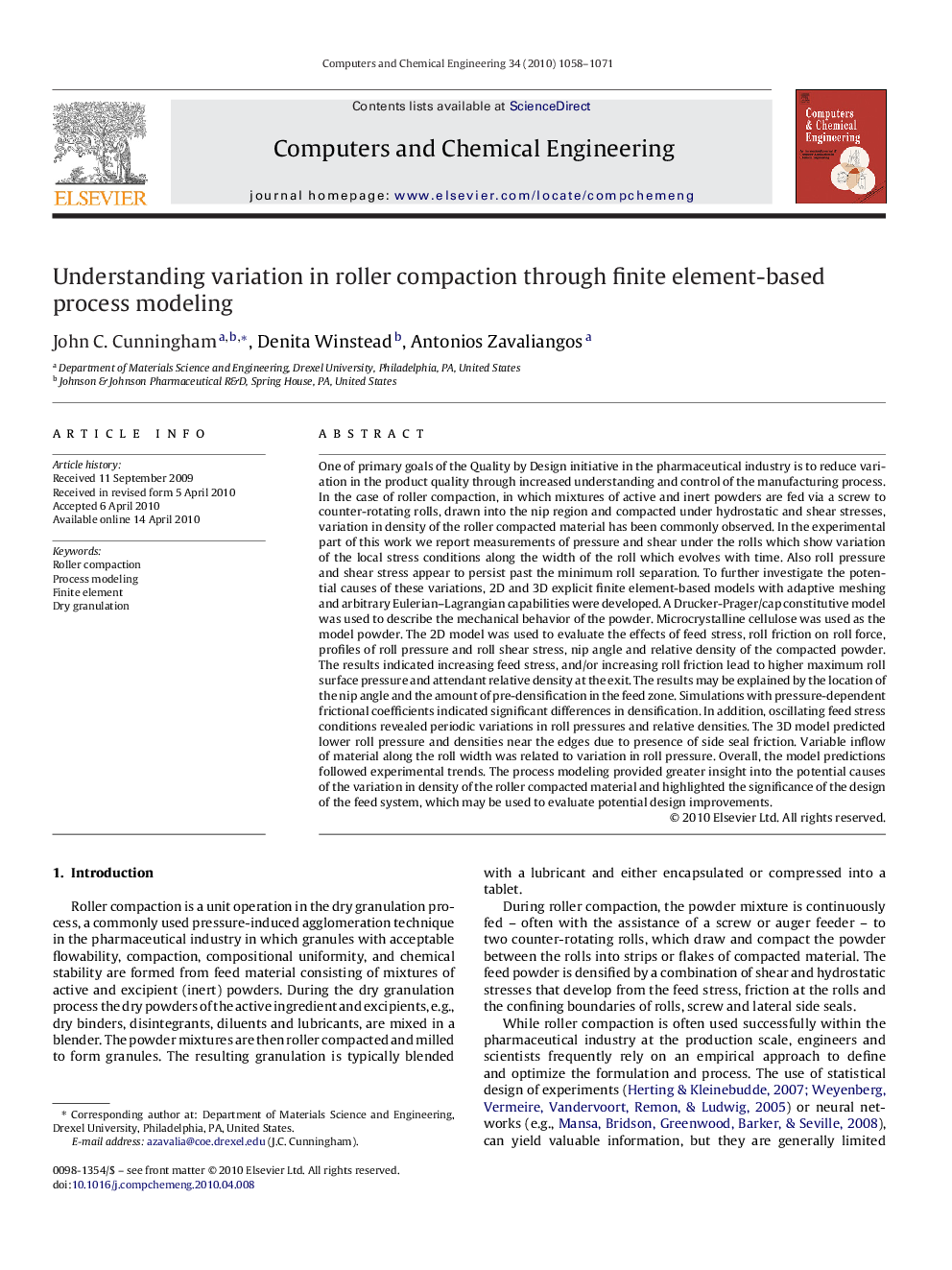| کد مقاله | کد نشریه | سال انتشار | مقاله انگلیسی | نسخه تمام متن |
|---|---|---|---|---|
| 173249 | 458583 | 2010 | 14 صفحه PDF | دانلود رایگان |

One of primary goals of the Quality by Design initiative in the pharmaceutical industry is to reduce variation in the product quality through increased understanding and control of the manufacturing process. In the case of roller compaction, in which mixtures of active and inert powders are fed via a screw to counter-rotating rolls, drawn into the nip region and compacted under hydrostatic and shear stresses, variation in density of the roller compacted material has been commonly observed. In the experimental part of this work we report measurements of pressure and shear under the rolls which show variation of the local stress conditions along the width of the roll which evolves with time. Also roll pressure and shear stress appear to persist past the minimum roll separation. To further investigate the potential causes of these variations, 2D and 3D explicit finite element-based models with adaptive meshing and arbitrary Eulerian–Lagrangian capabilities were developed. A Drucker-Prager/cap constitutive model was used to describe the mechanical behavior of the powder. Microcrystalline cellulose was used as the model powder. The 2D model was used to evaluate the effects of feed stress, roll friction on roll force, profiles of roll pressure and roll shear stress, nip angle and relative density of the compacted powder. The results indicated increasing feed stress, and/or increasing roll friction lead to higher maximum roll surface pressure and attendant relative density at the exit. The results may be explained by the location of the nip angle and the amount of pre-densification in the feed zone. Simulations with pressure-dependent frictional coefficients indicated significant differences in densification. In addition, oscillating feed stress conditions revealed periodic variations in roll pressures and relative densities. The 3D model predicted lower roll pressure and densities near the edges due to presence of side seal friction. Variable inflow of material along the roll width was related to variation in roll pressure. Overall, the model predictions followed experimental trends. The process modeling provided greater insight into the potential causes of the variation in density of the roller compacted material and highlighted the significance of the design of the feed system, which may be used to evaluate potential design improvements.
Journal: Computers & Chemical Engineering - Volume 34, Issue 7, 14 July 2010, Pages 1058–1071